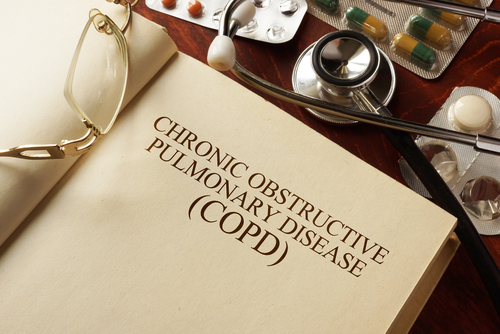The New GOLD 2017 Report : What are the updates?
M3 India newsdesk Jun 09, 2017
The GOLD guidelines, the standard international guidelines for treatment of COPD, provide annual updates.

The Global Initiative for Chronic Obstructive Lung Disease (GOLD) report for the diagnosis, management, and prevention of COPD has been updated this year. The ‘ABCD’ assessment tool of the 2011 GOLD update was a major advance compared with the simple spirometry-based grading system of the earlier versions of GOLD. In the new GOLD report 0f 2017, published in Respirology, here are the prominent updates
What has been updated?
- Every chapter of the report, incorporating new charts, figures and references
- Diagnosis and management recommendations for COPD
- The definition of COPD
- Recommendations for noninvasive ventilation, oxygen therapy, and lung volume reduction
- Strategies for escalating and de-escalating of therapies
- The emphasis on personalized treatment approach and the influence of comorbidities for disease management
The New Definition of COPD
"COPD is a common, preventable and treatable disease that is characterized by persistent respiratory symptoms and airflow limitation that is due to airway and/or alveolar abnormalities usually caused by significant exposure to noxious particles or gases.”
The New Risk factors
Lung growth to be considered an important risk factor for COPD and Lung function to be determined by factors like exposure to smoke from tobacco & biomass, Improper nutrition, Infections, and Air pollution.
The new definition for exacerbations (with respect to COPD)
“Worsening of respiratory symptoms that result in additional therapy.”
Exacerbations to be classified into mild, moderate and severe;
- Mild exasperation: To be treated with short-acting bronchodilators.
- Moderate exasperation: To be treated with antibiotics and/or oral steroids.
- Severe exasperation: Hospitalization or Emergency department visit.
Updated therapeutic guidelines
- Based on the latest clinical data, the therapeutic recommendations for several pharmacologic & nonpharmacologic management of COPD have been updated.
- Pneumococcal vaccine for every COPD patient above 65 years of age and younger patients with significant comorbidities.
- The emphasis on the benefits of using Inhalers and long-acting bronchodilators.
Treatment options to be personalized
- Begin with either a long-acting β2agonist (LABA) or muscarinic antagonist (LAMA), followed by a combination of the two in the case of persistent symptoms.
- Alpha1 antitrypsin augmentation therapy: For patients with severe hereditary alpha1 antitrypsin deficiency and emphysema
- Long-acting oral and parenteral opioids (Low dose): For Dyspnea in severe COPD
- Not recommended: Theophylline, Longterm therapy with inhaled corticosteroids (ICS) or oral corticosteroids, Statin therapy and FDA-approved drugs for pulmonary hypertension
Treatment strategy on the basis of Groups classified according to disease severity. Groups B, C, D Consists of COPD Patients with high symptom burden and exacerbation risk
- Group A patients: Bronchodilator
- Group B patients: A single longacting bronchodilator, escalated to two bronchodilators if breathlessness persists, Dual long-acting bronchodilators when it gets severe; and de-escalating to a single bronchodilator if symptoms don’t improve.
- Group C patients: A single longacting bronchodilator and a second long-acting bronchodilator. For persistent exacerbations: Use a combination of LABA and ICS. LABA/LAMA is more preferred since ICS could increase pneumonia risk in some patients.
- Group D patients: A combination of LABA and LAMA. For AsthmaCOPD patients and those with high counts of blood eosinophils- LABA/ICS.
Other updates include the detailed discussion of the following;
- Indications for discharge from the hospital after acute exacerbations and follow-up.
- Nonpharmacologic strategies of therapy like Exercise, Smoking Cessation, Rehabilitation programs, Nutrition guidance, Oxygen therapy, Treatment intervents- bronchoscopic & Surgeries.
While this update will be a helpful resource for guiding physicians throughout the world to diagnose and manage COPD, it also emphasizes the need for further research and clinical studies to discover therapies to decrease mortalities and disease progression rates.
-
Exclusive Write-ups & Webinars by KOLs
-
Daily Quiz by specialty
-
Paid Market Research Surveys
-
Case discussions, News & Journals' summaries